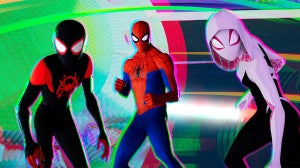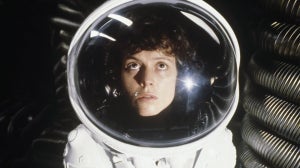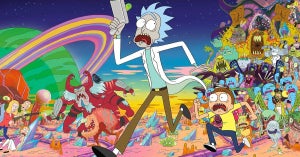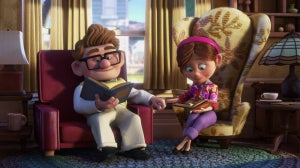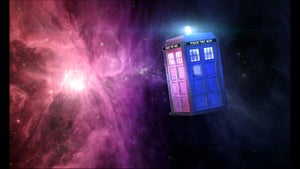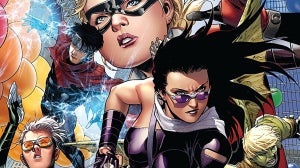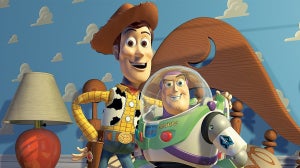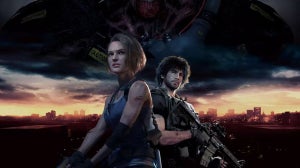
Earlier this month I was one of a lucky few flown up to Stirling Castle to play The Witcher 3: Wild Hunt and speak with the guys and gals at developer CD Project RED. It’s fair to say that The Witcher 3 is already one of the most anticipated games of 2015 – due for release on the 19th of May on PC, PS4 and Xbox One – so we took your most pressing questions on board when testing out the game.
For those of you who are new to The Witcher series of games, you play as Geralt of Rivia, a professional monster hunter who is searching for both his mysterious lover, the sorceress Yennefer, and also ‘a child of prophecy’, Ciri. The series is based on the fantasy short stories of Polish writer Andrzej Sapkowski, known for their gritty, ironic humour and dark, morally ambiguous setting.
What we got to see (minor spoilers!):
In our 4 or so hours of gameplay we were let loose on the game’s prologue, and then a segment of the game several hours on, in Skellige – a ‘windswept archipelago inhabited by Viking-like warriors.’ As someone with only a little experience of the series, it was heartening to see a solid optional tutorial sequence, set in a flashback, to help new players pick up the basics of the mechanics and the story world at their own pace before being thrown in the deep end.
With 3-4 months of development time left to do some polishing, we saw some funny, minor bugs – always to be expected in a massive open world game – like NPCs getting caught inside ladders, but with developers on hand and feeding back directly to the studio in Poland, I was assured by Miles Tost, a Level Designer at CD Projekt Red, that they’re confident of hitting the release date with most issues smoothed out.
One of the implications of moving towards a larger open world is the impact it has on player transport. Thankfully, both horses and fast travel appear to have been introduced well and in a fairly balanced manner. You swing your sword from the horse, but any prolonged combat will spook the horse into running away and leaving you on foot to deal with whatever monsters you were trying to play polo with.
If you’re playing with a controller, by default pushing one of the analogue sticks calls the horse – however, the other analogue stick locks onto your enemies. This often led to Geralt, in absurdly comic fashion, whistling briskly at monsters when I was planning to swing a silver sword at their faces. Fast travel is by means of signposts you find at fairly spread out settlements, which is a nice way to stop you from just teleporting all over the place and avoiding doing some actual travelling.
Combat remains a great strong point in The Witcher 3. In difficulty terms it’s certainly no Demon Souls, but it definitely provides ample challenge and I found myself running away from some of the tougher groups of enemies and mini-bosses like a headless, muscle-bound, white-haired chicken on multiple occasions. Rolling is still in the game but less cheaty, and you can still damage non-targeted enemies when swinging furiously.
Again, though, these enemies are organically well introduced to new players. On one of the side quests, I found myself up against a Noonwraith who was proceeding to kick my arse without taking any damage. After my classic chicken escape, I was reminded to check the Bestiary to learn about the weaknesses of different monsters. Sure enough, it told me that a specific spell would render it vulnerable to my sword.
Emboldened with well implemented knowledge and lore I was able to defeat it without much fuss. Not only is this a good way to introduce new players to knowledge returning players should know intrinsically, but it also fits perfectly within the lore of Witchers, who along with heavy training, also study intensely to find the weaknesses of the monsters they hunt.
One of the things I found most impressive about The Witcher 3: Wild Hunt, though, was how well implemented side-quests felt. One of the major complaints about most – if not all – fantasy RPGs is the preponderance of fetch quests and other meaningless tasks that haunt them. This mindless, meaningless padding always breaks immersion, and has led me to abandon many a game 30 hours in.
In The Witcher 3 (or at least what we played), side quests felt like a natural progression of the main story – developing your view of the world and the relationships characters in the world have to Geralt. These side quests often required the player to make choices that felt like they meant something, however minor, to the game world. They could be gained both by conversations with NPCs, as well as reading the noticeboards in the towns and villages you come across. The vastness of the prologue area also meant that I never spent too much time returning to the same towns.
Levelling and XP are tied to this side-quest system, which means less grinding. You’ll still have to go out and hunt monsters regularly, but there are enough random encounters on the road for you to do that without too much hassle. Monster’s levels, though, do not scale and are tied to the area. It’s possible for skilled players to take down higher levelled monsters – but it will take time and concentration.
We were told that the decision to not scale monsters was made by CD Projekt Red to make sure that players feel like they are actually achieving something within the world. Coming back to an old area will remind you that you’ve increased in power as you cut through once-difficult monsters like butter.
Hints were made to us about a mechanic that will allow you transfer your save file to both PC and Console versions, but no specifics were revealed. For newer players or those who can’t transfer, there will be conversations where you will be asked about pivotal events that occurred in the previous games. This way newer players still get a world impacted by the previous games, and old players are given some nice nostalgia or the ability to play in a different world than the one they ended up with.
Though we weren’t shown much narratively beyond the prologue, it was made clear that you’ll finally be able to play as Ciri in flashbacks that will play out various sequences that Geralt is learning about in his quest to find her, which all sounds very cinematic. These sections will be generally more linear and used as a narrative tool for plot exposition – so don’t expect any open world wandering as her. Ultimately, we were told, CD Projekt Red are following the books, and don’t really want to deviate from the source materials.
In terms of graphics, the game world is absolutely gorgeous; feeling alive and vibrant in towns and dank and forboading in forests and between settlements . Characters are still a bit weird-eyed, but textures and lighting effects were all top notch. It was obvious to see the inspiration of Scotland, and in particular Stirling, in the Skellige segment of the game and it was a pleasure to see the detail they had gone into when designing the world.
One of the very few complaints I had was that the menu system is still a bit befuddling, especially for beginners, and crafting remains a mystery to me after 4 hours of play. These elements could definitely been integrated better – but, again, the developers were aware of this and already working on it.
The Witcher 3 Preview Verdict:
In the end, though, The Witcher 3: Wild Hunt is definitely something to be excited about. From what we saw the game is going to deliver on its high expectations and more. I certainly wouldn’t count it out from topping a lot of end of year lists, despite the glut of games scheduled for this year.
Image Source: CD Projekt RED

